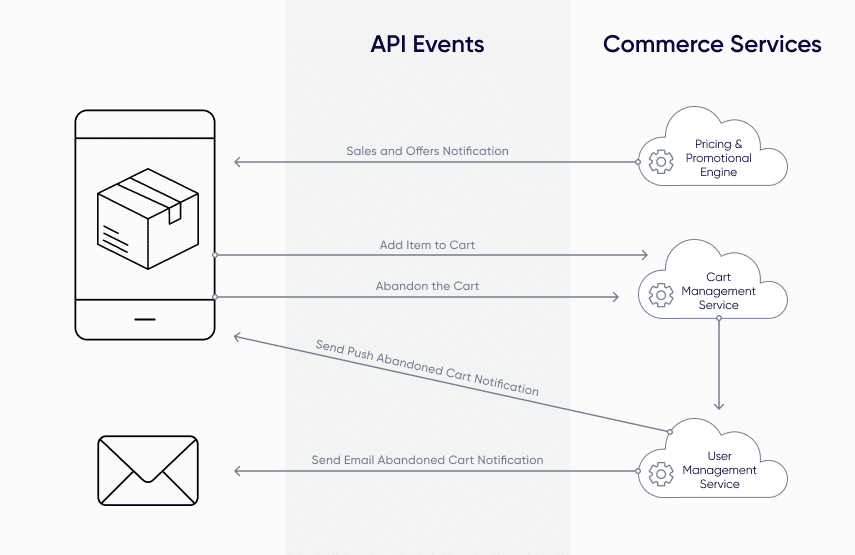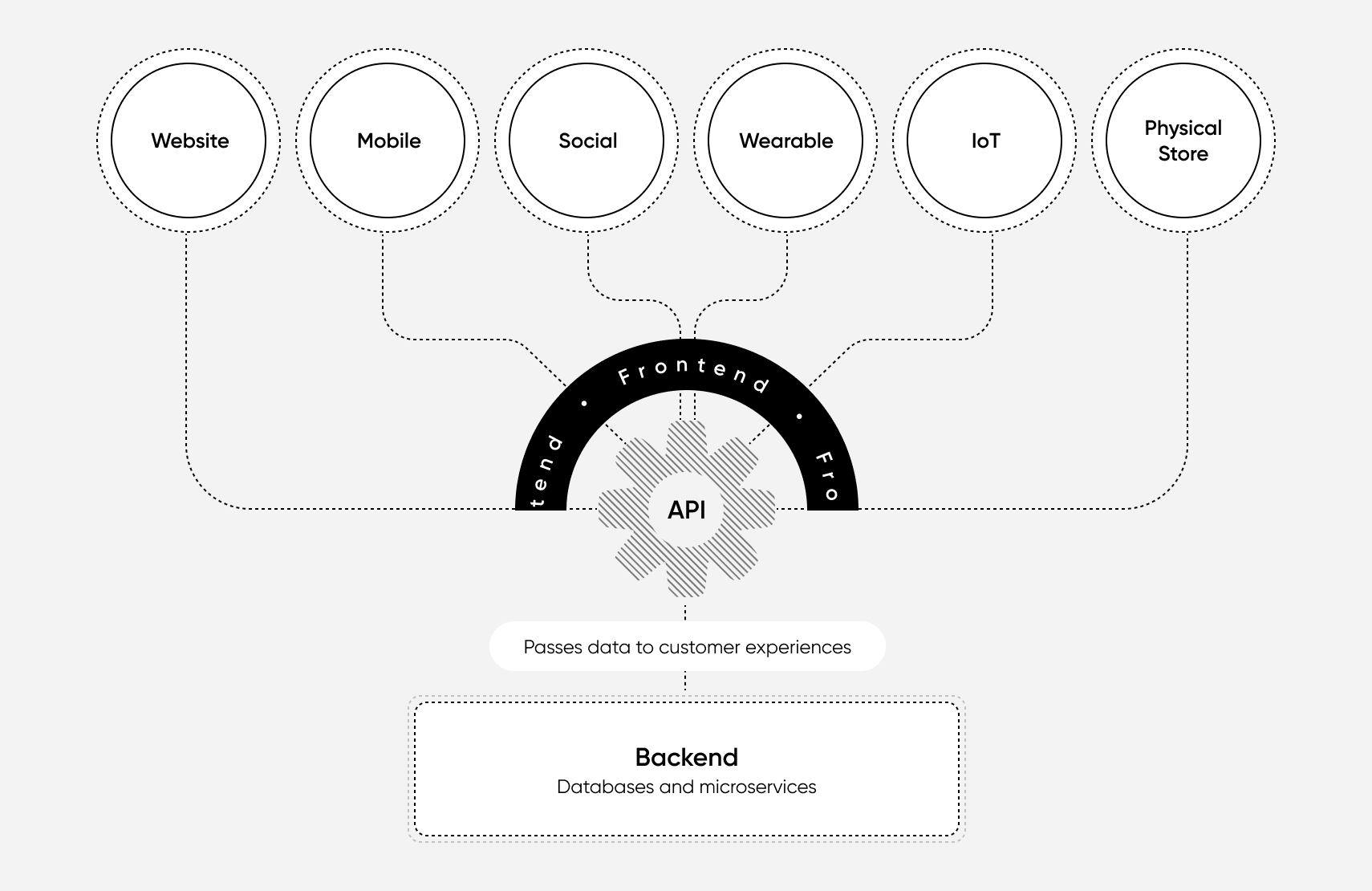What Are E-Commerce APIs?

APIs are contracts that define both the communication channels as well as the language of communications between services.
Proper security protocol enforcement in APIs ensures a safe environment for businesses and customers to operate in.
Omnichannel services rely on APIs to deliver a seamless shopping experience for users.
[toc-embed headline=”E-Commerce APIs Definition”]
E-Commerce APIs Definition
API stands for application programming interfaces. E-commerce APIs are methods of communication among applications inside and outside a commerce platform.

[toc-embed headline=”Overview of E-Commerce APIs”]
Overview of E-Commerce APIs
Application developers try to reuse existing code to ensure faster, lower-cost development that’s easier to maintain. They often don’t start developing applications by building a database from scratch since database usage patterns are similar across different applications. So instead of recreating a database each time, they create it once and use it across multiple applications.
Nowhere is this pattern of reusing existing data for different applications more visible than in the e-commerce realm. APIs for e-commerce allow independent services to work together, linking them without having them explicitly rely on each other.
For instance, data from a pricing and promotions service can be linked to a product information manager via e-commerce APIs. The separation of these services allows for greater flexibility in how promotions and products are handled. Merchandisers can accurately update product information while marketers created promotions simultaneously without causing any issues. This platform can occur because of e-commerce APIs.
Security protocols
As the number of data breaches continues to rise, it’s becoming more important to think about security when building out an e-commerce platform. Without proper interfacing using APIs, if a malicious user gets access to any component of a commerce platform, they will have access to all information within the system. However, when using APIs with proper security protocols enforced, having physical access to one component of the platform doesn’t give intruders information about other components.
Different APIs have different approaches for handling security, including cryptography, authentication, and authorization. These are often based on mathematical proof. It is important to understand the different types of APIs to help prevent security issues of an e-commerce platform. For example, fabric uses JWT which relies on an RSA signature with SHA-256, a mathematically sound cryptography approach.
Omnichannel commerce and APIs
Implementing omnichannel commerce requires synchronization across multiple systems, and there are two ways to achieve this. The first approach relies on different services talking to each other through APIs, updating each other’s progress log. The second approach bypasses the need for synchronization by utilizing the same backend services through API. For example, a mobile shopping app and e-commerce site would both use an order management system to place orders. Although both of these approaches are viable, utilizing the same backend service often results in less costly yet better products.
[toc-embed headline=”How E-Commerce APIs Work”]
How E-Commerce APIs Work
E-commerce APIs are often published in the form of documentation, such as fabric API documentation. This documentation describes how a connection should be made and how requests and data should be transferred. Common methods of communication in e-commerce consist of RESTful API schemes, GraphQL, and SOAP.
With either method of communication, the following happens:
- A connection is made over the internet
- After a handshaking protocol is activated to ensure security, the requesting application (the client) clarifies what it needs: user data, inventory count, etc.
- The responding application (the server) replies with a status code (success or error). If a success, the data is passed to the client.
[toc-embed headline=”Example of E-Commerce APIs”]
Example of E-Commerce APIs
Consider an e-commerce business that sells clothes. Naturally, there are many services running that let the business operate seamlessly across various channels. Services might include a mobile app, a website, a pricing and promotions engine, a customer relationship management (CRM) platform, an email platform, an order management system, advertising platforms, and business intelligence (BI) analytics. To understand how these services communicate with one another, let’s look at an example.
After a pricing and promotions engine initiates a new promotion, Alice receives a push notification about the sale. She opens the notification from her smartphone and adds some items to her cart—but she doesn’t proceed to purchase the items because she gets interrupted by a call.
When the shopping cart is marked as idle or abandoned by the shopping cart service, an event is sent to the email platform via an e-commerce API that triggers an email. This email is sent to Alice, reminding her of items in her cart. A few hours later, she clicks the link in the email and opens the website from her laptop.
Even though she is on a different device, she sees the same items in her cart that she added while using the mobile app. She proceeds to purchase the items from her laptop. The order management system adds the new purchase to the BI analytics service and the shipping procedure is initiated.
All of the services communicate with each other through e-commerce APIs. The mobile app and website fetched the cart and items through the backend’s API; the email and push notification were sent through APIs, and the BI and order management service were updated through APIs as well.

Tech advocate and writer @ fabric.
